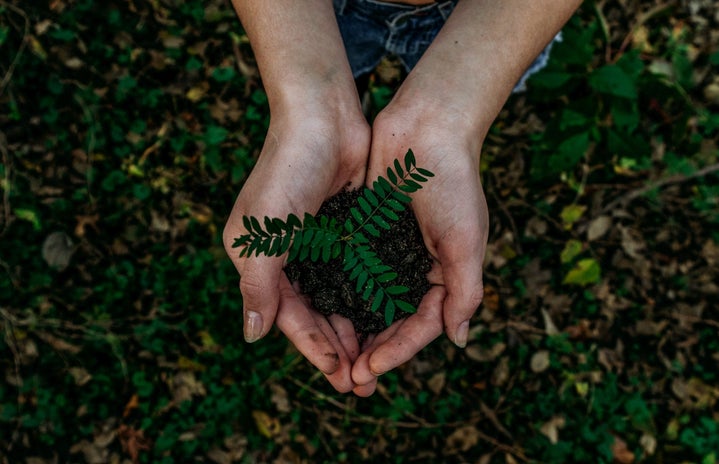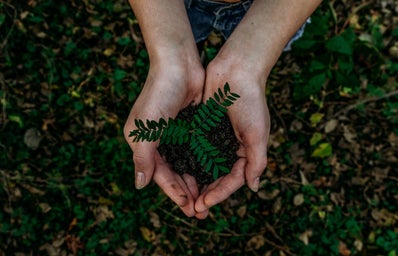So, you want to be more sustainable, but you don’t know where to start. The good news is you’ve already clicked on this article — which is a great place. Maybe you recently watched a documentary about the climate crisis or maybe you’ve recently come across the zero waste movement and you want to learn more. We’re here to help! We’ve laid out ten steps you can take to start off your more sustainable future.
Psssst…remember everyone is different! Some may find certain steps easier than others based on need and accessibility. Don’t be discouraged if you aren’t being “perfectly sustainable” — because there is no such thing! The important thing is your thinking about your impact on this planet and trying your best to protect it.
- Educate Yourself
-
First things first, it’s crucial to educate yourself. This is perhaps the most important step in your journey because it will influence your future decisions. Be curious, start asking questions and seek out answers from experts. There are so many amazing documentaries, podcasts and books to learn from about the climate crisis.
Here is a great place to start: Vox created a nine video series on YouTube with UCLA that explains issues from food waste to the environmental impact of two-day shipping in short videos.
- Start with the “Easy” Eco-Friendly Swaps
-
Sometimes the little changes can make a big difference. One of the things you can start doing today is using a reusable water bottle instead of buying plastic water bottles. It not only decreases your plastic waste but also saves you money! And, with the plenty of refillable water stations on Hofstra’s campus, it’s also convenient.
Another easy swap to integrate into your life is using reusable bags for shopping. Even though many places have made the switch to paper bags instead of plastic, using a reusable bag is still the most sustainable option. There are so many options for reusable bags that are easily foldable to carry with you anywhere you go. Remember when you leave the house to bring your reusable water bottle and shopping bag!
- Say No to Single-Use Plastics
-
In one year, we produce 300 million tons of plastic, half of which are single-use. 91% of all plastics are not recycled and end up in landfills or the environment. Reducing your use of plastic is one of the most effective ways to avoid this waste. Things like plastic straws, cutlery and bags are especially difficult to recycle and are things we encounter on a daily basis. To help you avoid single-use plastics, you can buy things like reusable straws and cutlery or, chances are, you already have one, but never have it with you. Next time you leave your house, don’t forget to bring your reusable straw for your morning Starbucks run. It’s as easy as that! And, if you don’t have a reusable straw at the moment, you can start reducing your waste by just refusing straws when you don’t actually need one. For example, when you’re at a restaurant, you can simply refuse a straw from the waiter when you are having drinks that don’t require straws — and most don’t!
- Make a List of Future Eco-Friendly Swaps
-
So, now that you have your reusable water bottle, bags, straws and more, you’re wondering what other eco-friendly swaps you can make. You may be surprised but there’s almost always an eco-friendly alternative to just about everything. But, wait! Before you start buying a bunch of new eco-friendly swaps, use up what you already have. This means to finish your shampoo before trying shampoo bars and finish using your plastic toothbrush before trying a bamboo one. The most sustainable thing you can do at the start of your journey is using up what you already have, so make a list of future eco-friendly swaps you’d like to integrate into your life and only purchase them when you’re out of what you already have.
Here is a list of some eco-friendly swaps to add to your list:
– Shampoo and condition bars instead of plastic shampoo bottles
– Compostable phone case instead of a plastic phone case
– Reusable thermos instead of single-use coffee cups
– Plastic-free laundry detergent tablets instead of Tide pods
– Reusable dryer balls instead of dryer sheets
- Reuse, Reuse, Reuse!
-
Yes, you’ve heard it a million times: Reuse, Reduce, Recycle! Finding ways to reuse things you already have is an easy and money-saving step in your sustainability journey. Get creative and find ways to upcycle things instead of throwing them away.
Have an old t-shirt? Cut it up and use it as a cleaning rag instead of paper towels. Just finished a Talenti ice cream? Use the container to hold pens or your makeup brushes.
Give the products in your home a second life and remember, something is only single-use if you use it once!
- Eat More Consciously
-
Eating a more sustainable diet is actually one of the most significant changes an individual can make to help protect the planet. Meat production is a large contributor to greenhouse gas emissions. Here are some of the changes in your diet you can make to benefit the health of the planet while also improving your own health: Prioritize eating plants, minimize the amount of red meat you consume, shop produce grown locally and eat more plant-based.
- Start Saying No to Fast Fashion
-
Fast fashion refers to brands mass-producing clothes at a low cost. Fast fashion brands include Zara, H&M and Forever 21. The fast fashion industry has a huge impact on the environment. There is excessive use of water at these factories. To produce one cotton shirt, it takes approximately 3,000 liters of water. Additionally, with fast fashion, comes excessive consumption of clothing and tons of textile waste.
So, how can you say no to fast fashion? Shop second hand, get more wear out the clothes you already have, shop from sustainable brands and prioritize quality over quantity. However, we know sometimes fast fashion is the only option. Again, it’s all about the small choices! You don’t need to eliminate fast fashion from your life completely to be more sustainable.
For a more in-depth discussion about fast fashion, we recommend watching this episode above from Netflix’s Patriot Act.
- Ask Before You Buy
-
Being more “sustainable” is all about being more conscious about the choices you make every day and the things you buy are a huge part of that. One of the best ways to be more sustainable is to reduce the things you own.
The next time you buy something, ask yourself the following questions: Do I really need this? How much use am I going to get out of this item? Is there a more eco-friendly alternative to this product?
- Ask Before You Throw Away
-
You might be throwing something away that doesn’t have to go to a landfill. Before you throw something in the trash, ask yourself if there is a better way to dispose of the item. Can you recycle it? Can you reuse it in some way? Can you compost it?
- Engage in Conversations
-
Finally, a great way to step up your sustainability journey is to engage in more conversations with those around you about why you started this journey. Explain the eco-conscious choices you have been making and why. You might be able to get more people to also ditch single-use or say no to fast fashion. Your friends and family may see what you’re doing and be inspired to follow in your steps.
Again, everyone’s journey is different, so be kind to yourself while being kind to the planet. Mother Nature will thank you for the effort.


